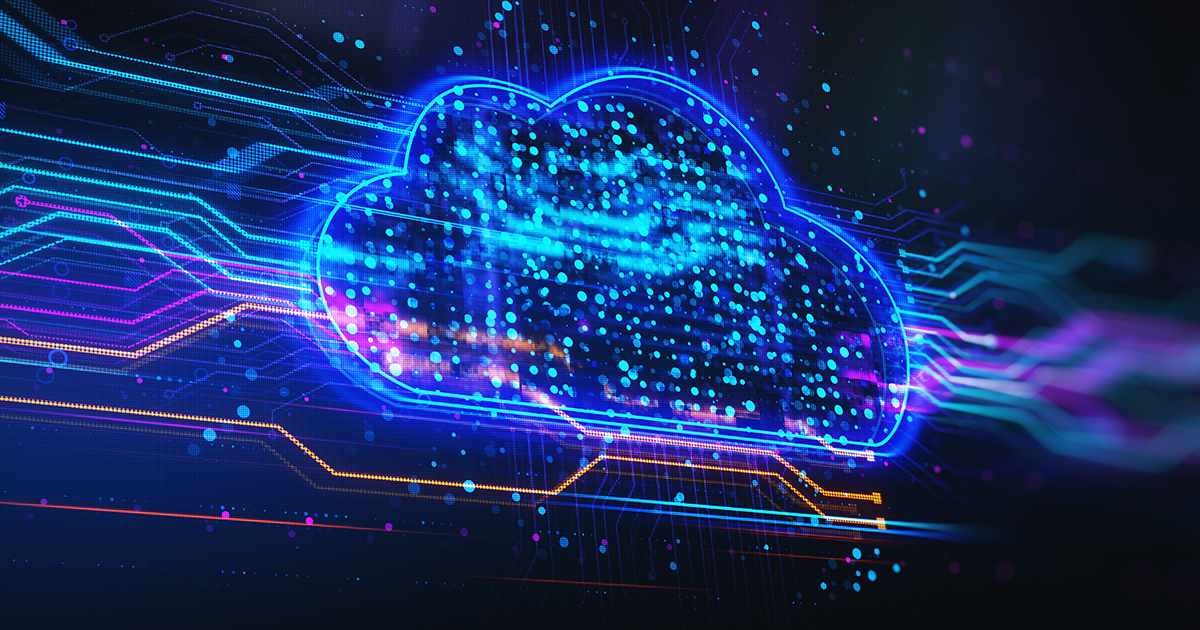
Cloud production is one of the buzziest terms in the world of media. But what are we really talking about when we use that term? What makes cloud production different than traditional ways of working? Is it a big technological step forward for the industry, or just a new way of deploying old ideas? How can teams expect cloud computing to change their jobs now, and in the future?
NAB CTO and EVP Sam Matheny and Peter Riordan, head of worldwide broadcast business development at AWS Media and Entertainment, tackle these cloud production questions and others as part of NAB Amplify’s new “Hey, Sam!” Q&A series, tackling the issues of who’s who and what’s what in technology and M&E.
Watch the Video
(“AWS” is short for Amazon Web Services, one of the world’s first and the largest cloud computing solutions.)
If you’re not sure what, exactly, cloud production is, there may be good reason for that. Riordan explains that it “falls into a couple of different categories” and can mean something a bit different in each case.
“Traditional episodic” cloud production is “planned and advanced and more intentional” and tends to involve both pre-production and post-production work, Riordan explains, whereas, live remote cloud production is what we use for news, sports or event coverage, generally speaking. The broadcast space tends to focus on live remote cloud applications, which have been “expanding very, very rapidly over the last 18 months to two years.”
Riordan does attribute a lot of this uptake to the pandemic’s impact. “Early on, there were a lot of frantic phone calls from customers saying, ‘I need to figure this out right now.'” So we shifted, I think, as an industry from a really deep concern over the level of quality and latency and everything else to ‘sometimes this is good enough.'”
With that perspective change, engineers became more amenable to accepting video from a mobile device, for example, if the quality was decent but might have made engineers “cringe” in prior years. The shift was necessitated when content was still needed but “nobody could get in the doors of the facilities that they would traditionally work in.”
Many phones can now shoot HD or even 4K video, but can mobile networks support its transport to the cloud in real time or is it more practical to finish shooting and then upload the content? Riordan says both methods are now fairly common. He cites a TV show in which the host essentially took a video selfie for the on-air program, making more dynamic content, even for episodic television.
“The practicality of how you’re using that content, or how you’re capturing that content, becomes a really big piece of the conversation,” Riordan notes.
For example, Deadliest Catch crews weren’t going to send a $100,000 camera out on the boat in the middle of the Bering Strait, because the circumstances meant that the cameras were essentially disposable and a $10-15,000 price tag was more reasonable in that scenario.
Networks have become very robust, he says. But “when you’re using satellite distribution, you worry about rain fade, and when you’re using fiber, you’re worried about backhoe fade, right?”
Meaning, Riordan says, “The typical broadcast rules apply, which is, you’re not gonna do anything single threaded; if it’s your primary source of revenue, you’re gonna make sure that you’re protected. And people don’t necessarily think about that when they think about cloud-based workloads.”
But they should. “You trust you trust the cloud the same way you trust any of the other workloads. And that is, you don’t put all of your eggs in one basket. You make sure that you are well architected in terms of your infrastructure. And then it’s just as reliable.”
Pandemic aside, what are the key benefits of cloud production?
“Sports production is a great example” to prove why the cloud makes sense. No matter the sport, coverage will likely involve a production truck, an outdoor podcast truck, equipment set up, and a lot of downtime. But with cloud-based workflows, crews “are standing up your resources in the cloud for really essentially the period that you are actively using them.”
That’s the “pay as you go model that the cloud brings to the conversation,” Riordan says. “Let’s say you that production switcher online for the duration of the event, plus whatever comfortable period of time ahead of and on the tail of that [event] you’re comfortable” booking it. You end up paying six or eight hours, rather than committing to those costs 24/7/365.
HEY, SAM! DEMYSTIFYING M&E TECHNOLOGY TRENDS:
From Artificial Intelligence and Machine Learning to 5G and cloud production, NAB CTO and EVP Sam Matheny tackles the issues of who’s who and what’s what in technology and M&E. Learn all about the technologies that are shaping our rapidly transforming industry in NAB Amplify’s “Hey, Sam!” Q&A series:
- Hey, Sam! Tell Me About AI and ML Applications for Media
- Hey, Sam! What Is Hybrid Radio?
- Hey, Sam! What Do I Need To Know About 5G?
- Hey, Sam! How Is Streaming Impacting the TV and Video Marketplace?
“The economics are fascinating in terms of… how this scales.” Riordan says customers have indicated that this “model opens up new doors for them” and they can take advantage of more content rights now, with lower capture costs.
Plus, the creation of a popup channel for the duration of an event is a novel application that’s advantageous for both broadcasters and consumers, whether “it’s available through a direct to consumer platform or on your air, or a digital channel,” Riordan explains.
It also doesn’t have to be on-prem if you’re doing the production in the cloud. “You can stand up the infrastructure for that channel origination, where you’re doing ad insertion and graphics and everything else.” It’s ultimately a “dynamic way to stand up temporary workloads” just for the monetization or execution period, with fewer extraneous costs.
How will the cloud affect staffing?
“I think it opens up the door to some really interesting approaches,” Riordan says. For example, a technical director may be able to work from the comfort of home or a remote facility in the future, which theoretically would enable you cover more events during the same period of time. That in theory, means “increasing your revenue opportunity” as an upside for freelancers.
For professional crews, site engineering or camera operators, there’s not likely to be a be a big change, since their presence will be required at the venue. But fewer people will be needed on site and that may mean that crews can be more selective about who goes where and when. Or a go-to person may be used for back-to-back events because travel time has been eliminated for remote professionals.
Want more? The CONNECT pillar at NAB Show covers all things distribution and delivery — and that definitely includes 5G. It’s also the new home of the Broadcast Engineering and IT Conference, which features sessions on ATSC 3.0, 5G and much more from trusted experts and trailblazing tech pioneers.
What’s the catch for cloud? Are there challenges or drawbacks?
“We’re not gonna do the NCAA Final Four or the Super Bowl in the cloud in the next year,” Riordan says of the current limitations. “But the trajectory is moving in a way that at some point that could be possible.”
He says, “The rapid movement forward has been astounding” since the first big pushes in 2020. “That’s partially driven by the maturity of the software that the vendors are writing. And these are all big names that you’re used to working with and the traditional on-prem environments.”
Even better, working in the cloud means “you don’t have to throw out what you’ve got and put in the new one, or wait five years for your amortization to be completed. You literally work with that vendor and you shift to their new product and whatever the pricing model is that they’re working on that, on that pay as you go. So you always have that continuous improvement and continuous access to the newest feature set.”
Riordan shared a, perhaps, counterintuitive example of cloud’s advantages in this area. A group of LA-based graphic designers were experimenting with cloud-based workflows. Latency was an anticipated concern, but rather than the expected preference for the on-prem environments, designers actual found that the cloud instance had a faster processor than the one in their facility. The studio’s processor was several years old, while the cloud tech was more advanced and mitigated the minor latency issues.
Where will the cloud be in 10 years?
Riordan predicts that a lot will depend on the fact the consumer is now being viewed as the “focus point,” and there are a lot of challenges ahead for the industry. However, Riordan says there indications that sports leagues, for example, are expressing a desire to take control over production and offer content directly to their constituency, enabling more global monetization, among other things.
For example, there can be a world feed from an event, but also the ability to code a camera so that a golfer, for example, could have an individual feed broadcast back to his home country’s national broadcaster that might be more interested in that than the full tournament play or in addition to that coverage, creating country-specific coverage.
Riordan explains, “I think there are gonna be some really interesting things that are gonna be driven by a consumer choice, whether that’s customization on the broadcast channel or giving the customer choice within an OTT platform or other things. That engage[ment] piece is gonna be super critical.”
And we’re not far off from this being reality. In March 2020, the PGA Tour announced a new offering, Every Live Shot. For that product, “they are encoding all of the cameras from a tournament, putting them into the cloud. And then you, at the user end, can go into your device and say, ‘I wanna follow this golfer.'” They will tell you when the golfer is at each tee and follow every shot until the ball is sunk on the 18th hole.
How is the cloud advancing sustainability?
In Europe, Riordan says, conversations around sustainability and carbon footprint productions are starting to be top of mind.
For the cloud, this may mean that “only running servers for the period of time that you need it” is an easy way to be more environmentally conscious. That reduces heating and cooling costs, as well as requiring less compute power.
Smaller crews and reduced travel needs also are potential green benefits that also help the bottom line for productions, in addition to opening new content production opportunities.
The environment is less of a driver for the U.S., but Riordan expects that conversation will start soon in North America.
For now, the cloud is prompting customers to ask, Riordan says, “What is the art of the possible, and where are things going?” And that makes it a fascinating time to work in M&E technology.

